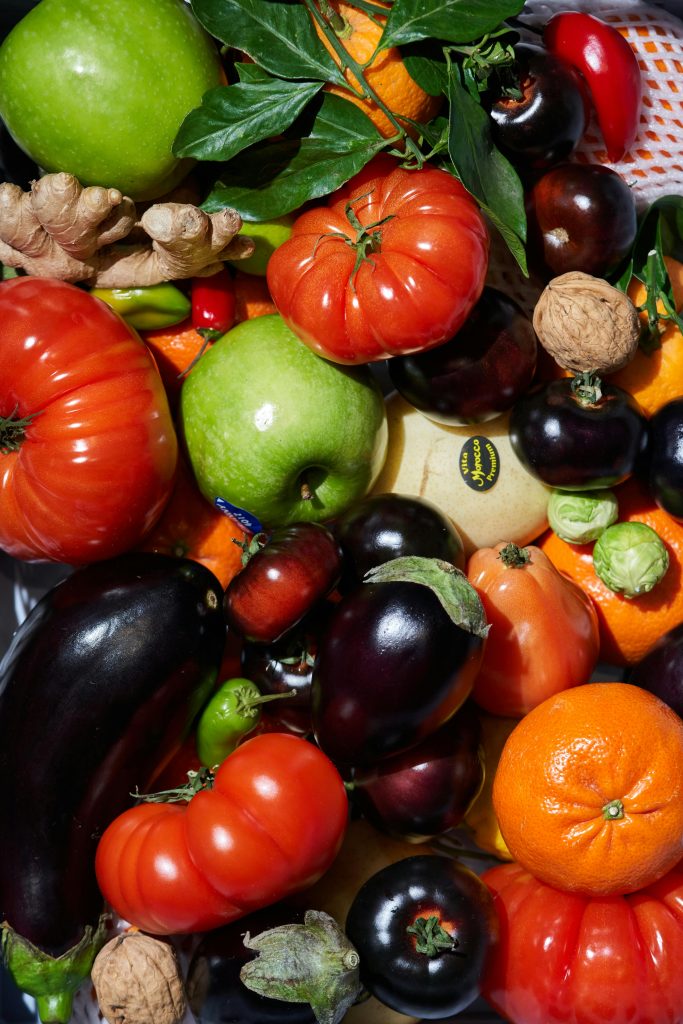Try a New Vegetable Every Month: Broadening Your Meal Options for Long-Term Health and Success with Diverse Meal Options
In the quest for healthier eating habits, variety is often the secret ingredient. Eating the same meals over and over might seem convenient, but it can lead to boredom and nutritional gaps. Trying a new vegetable each month is a simple yet powerful way to expand your palate, diversify your meals, and unlock a treasure trove of vitamins, minerals, and flavors. This practice can support long-term weight loss and overall well-being by encouraging creativity and healthier food choices.
By broadening your meal options, you can ensure your diet is both enjoyable and nutritious.
In this blog post, we’ll explore the benefits of incorporating new vegetables into your diet, provide tips for trying unfamiliar produce, and share ideas for making the most of this exciting culinary adventure.

This exploration of meal options extends beyond just vegetables. It includes trying new grains, proteins, and spices.
Why Try a New Vegetable Every Month?
Exploring Diverse Meal Options with Vegetables
1. Enhance Your Nutritional Intake
Each vegetable offers a unique profile of nutrients, including vitamins, minerals, antioxidants, and fiber. Broadening your vegetable choices helps ensure you’re getting a wide array of nutrients to support overall health.
2. Break the Monotony
Eating the same vegetables can make your diet feel repetitive. Introducing new options adds variety, making your meals more enjoyable and sustainable in the long term.
3. Support Weight Loss Goals
Vegetables are low in calories and high in fiber, making them ideal for weight loss. Experimenting with new vegetables can help you find low-calorie, nutrient-dense foods that you genuinely enjoy.
4. Develop New Culinary Skills
Cooking with new ingredients can improve your culinary creativity and skills. You might discover new ways to prepare vegetables or combine flavors.
Engaging the whole family in these experiments can create shared meal options that everyone enjoys.
5. Encourage Family Participation
Trying new vegetables can be a fun activity for the entire family. It’s an opportunity to educate kids about healthy eating while making mealtime more exciting.

How to Start Your Vegetable Adventure
Step 1: Create a Monthly Plan
At the beginning of each month, choose one vegetable to focus on. Consider seasonal produce to ensure freshness and affordability.
Step 2: Research Recipes
Before buying the vegetable, research recipes that incorporate it. Find dishes that match your taste preferences and cooking skills.
Step 3: Buy Fresh and Experiment
Consider how these new meal options can fit into your weekly meal planning.
Purchase the vegetable fresh from a local market, if possible. Experiment with different cooking methods—roasting, steaming, grilling, or eating it raw.
Here are some meal options to keep your diet fresh and exciting.
Step 4: Evaluate and Adjust
February is a great month to add rutabaga to your meal options for something new and flavorful.
After trying the vegetable, reflect on your experience. Did you like the taste? Was it easy to prepare? Use these insights to refine your future selections.

12 Vegetables to Try: A Month-by-Month Guide
Here’s a year-long roadmap to expand your vegetable horizons.
January: Kale
For April, artichokes can be an exciting addition to your meal options, bringing unique flavors.
- Why Kale? Packed with vitamins A, C, and K, kale is a winter superfood that boosts immunity and supports bone health.
- How to Use It: Add it to smoothies, salads, or soups. Try making kale chips as a crunchy snack.
In May, consider incorporating zucchini into your meal options to enhance variety.
February: Rutabaga
Eggplant in June can diversify your meal options and provide a creamy texture.
- Why Rutabaga? This root vegetable is rich in fiber and vitamin C and has a slightly sweet, earthy flavor.
- How to Use It: Roast rutabaga with olive oil and herbs or mash it as a potato alternative.
March: Asparagus
- Why Asparagus? Asparagus is a spring vegetable loaded with folate and antioxidants.
- How to Use It: Grill or steam asparagus and drizzle with lemon juice. It’s a perfect side dish for any meal.
For August, Swiss chard adds vibrant color and nutrition to your meal options.

April: Artichoke
As September arrives, turnips can be a hearty addition to your meal options.
- Why Artichoke? High in fiber and antioxidants, artichokes support digestive health.
- How to Use It: Steam whole artichokes and serve with a light dipping sauce or incorporate artichoke hearts into pasta dishes.
When October comes, Brussels sprouts can bring a festive flair to your meal options.
May: Zucchini
November’s meal options might include cauliflower, perfect for mashing or roasting.
- Why Zucchini? This versatile summer squash is low in calories and high in vitamins C and B6.
- How to Use It: Spiralize zucchini into noodles, roast it, or bake zucchini bread.
Finally, parsnips in December can add a sweet touch to your holiday meal options.
June: Eggplant
- Why Eggplant? Eggplants are a good source of fiber, potassium, and antioxidants.
- How to Use It: Try it in ratatouille, grill slices for a smoky flavor, or bake eggplant parmesan.

July: Okra
- Why Okra? Rich in vitamins C and K, okra is a unique vegetable often used in southern cooking.
- How to Use It: Add it to stews, gumbo, or roast it for a crispy snack.
August: Swiss Chard
- Why Swiss Chard? This leafy green is a powerhouse of vitamins A, K, and magnesium.
- How to Use It: Sauté with garlic and olive oil or add to soups for an extra dose of nutrients.
September: Turnips
- Why Turnips? Turnips are high in vitamin C and low in calories, making them a great fall vegetable.
- How to Use It: Roast turnips, mash them, or add them to stews.

October: Brussels Sprouts
- Why Brussels Sprouts? These mini cabbages are rich in fiber, vitamins C and K, and antioxidants.
- How to Use It: Roast Brussels sprouts with balsamic glaze or shred them into a slaw.
November: Cauliflower
- Why Cauliflower? Cauliflower is low in calories and carbohydrates, making it ideal for weight loss and low-carb diets.
- How to Use It: Make cauliflower rice, mash, or roast with spices.
December: Parsnips
- Why Parsnips? Sweet and starchy, parsnips are a great winter root vegetable high in fiber and folate.
- How to Use It: Roast parsnips with honey and thyme or add them to soups.

Tips for Cooking Vegetables
- Season Well Use herbs, spices, and healthy fats like olive oil to enhance the flavor of vegetables.
- Combine Textures Pair crunchy vegetables with creamy dips or soft grains for a balanced meal.
- Incorporate Into Favorites Add vegetables to dishes you already enjoy, like pasta, pizza, or stir-fries.
- Try Global Cuisines Explore international recipes to discover new ways of preparing vegetables.
- Invest in Tools Spiralizers, steamers, and air fryers can make vegetable preparation easier and more enjoyable.

Overcoming Common Challenges
“I Don’t Like Vegetables”
Start with milder options like zucchini or carrots and experiment with cooking methods that enhance sweetness, such as roasting.
“I Don’t Know How to Cook Them”
Use online resources like video tutorials and recipes to build your confidence in the kitchen.
“They’re Too Expensive”
Buy in-season vegetables or shop at local farmers’ markets to save money.
“I’m Too Busy”
Prep vegetables in advance by washing, chopping, and storing them for quick use during the week.

Long-Term Benefits of Trying New Vegetables
- Improved Nutrition Eating a variety of vegetables ensures you get a well-rounded intake of nutrients.
- Sustainable Weight Loss Vegetables are low in calories and high in fiber, helping you feel full longer and reducing the temptation to overeat.
- Better Gut Health The fiber in vegetables supports a healthy digestive system and promotes good gut bacteria.
- Lifelong Healthy Habits Experimenting with vegetables fosters a positive relationship with food and encourages mindful eating.

Conclusion: Embrace Your Meal Options
Exploring new meal options through vegetables is a simple yet transformative practice that can revolutionize your approach to food and health. It’s an opportunity to expand your palate, discover new flavors, and build a sustainable, nutrient-rich diet. With each new vegetable, you’re not just adding variety to your meals—you’re taking a step toward a healthier, more vibrant lifestyle.
So, what will be your first vegetable of the month? Let the adventure begin!


